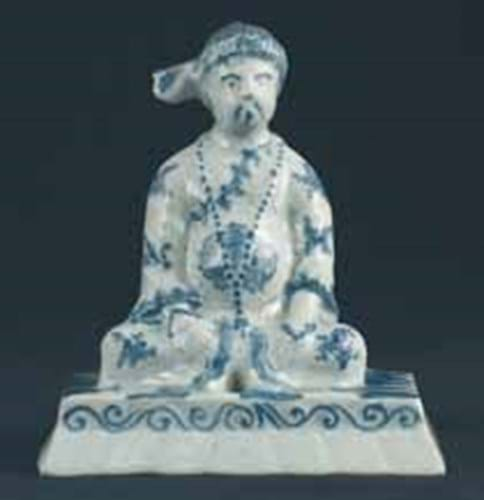
That is what Woolley and Wallis's keen-eyed specialist John Axford experienced when he spotted this little 4 1/4in (7cm) blue and white figure of an oriental amongst five boxes of sundries brought into the Salisbury rooms by a local lady.
"It shouted Limehouse at me from the start," an excited Mr Axford told ATG last week. His conviction that the slightly naive, cracked and repaired figure was from the short-lived east London factory was based on its similar feel to four leaf-shaped dishes that he sold in 1993 and a 6 1/2in (16cm) high blue and white cat sold by Phillips back in 1991 for £4800.
Watney excavations
Limehouse was 'discovered' after excavations in the early 1990s by the Museum of London and the late Dr Bernard Watney, who attributed a whole class of wares to this Thamesside factory. It ran for just three years, from 1746-48, when English porcelain production was in its infancy.
Because of its brief life, all Limehouse is pretty scarce, but most is useful tableware and only a handful of ornamental pieces have surfaced. Apart from the cat - the nearest comparable piece - just half a dozen tiny rudimentary models of dogs are known, which makes this the first human figure from the factory to be identified. Like the Limehouse feline, the oriental is derived from a Whieldon creamware model, but its earlier source is a Dutch engraving of 1655 featuring The Old Vice-Roy of Kanton.
With so little precedent, estimation is difficult, but John Axford is thinking in terms of £5000-8000 for the piece when it comes up in his English and Continental ceramics sale on May 24.




